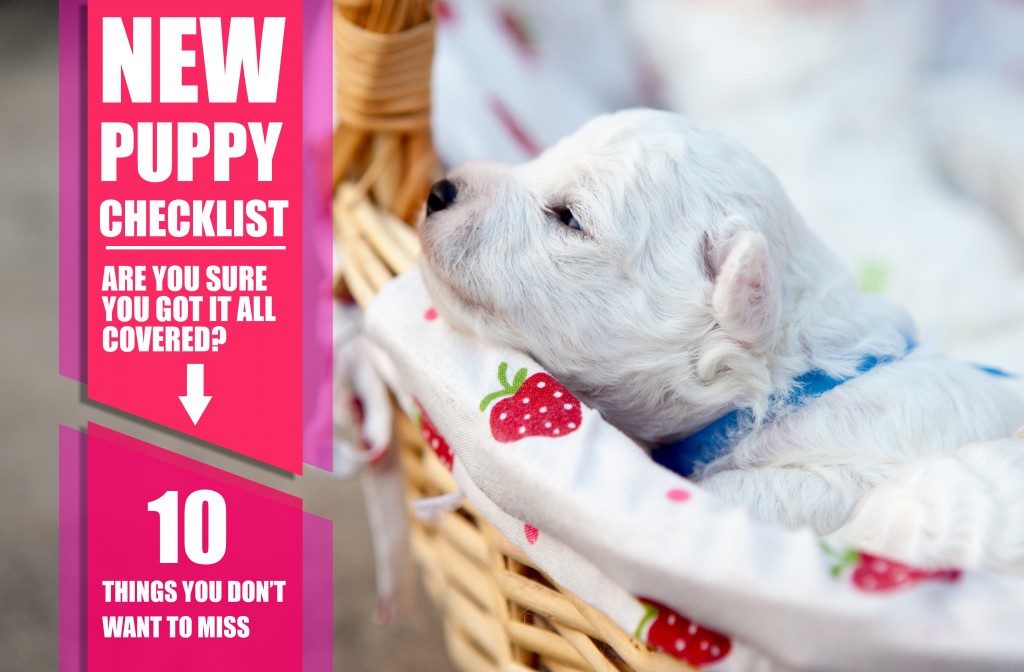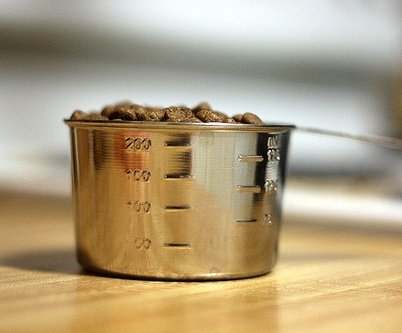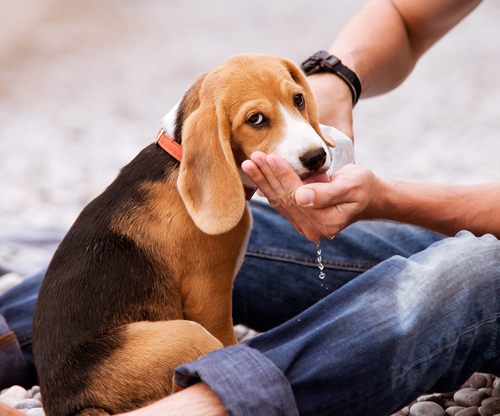
But before any of that can happen, you are going to have to make a home for your pup to thrive, and the reality is that, you should make up a checklist of things to have and things to do. Of course, if you don’t have a checklist, feel free to use this one, and you’ll be on your way to having the best 4 legged friend you’ve ever had.
Contents
Basic Puppy Supplies – New Puppy Checklist
Everyone needs supplies before they bring a puppy home. After all, you wouldn’t invite a guest for the evening without having anything to eat, drink or provide some form of entertainment, would you? Well, unlike a guest, a pup is going to stay a while longer, so the supplies here are going to be things you’ll want on hand at all times.
- Puppy Food — There are tons and tons of puppy food makers out there, and any one of their foods will do the trick. But if you are truly concerned about your puppies health, go organic with no by products, no additives, no corn syrup and no artificial preservatives. That’s the best you can do for any puppy you get.
- Bowls— Your new buddy is going to want to eat and drink out of something, so bowls are a natural. But to avoid spills, get bowls with large bases, with metal bowls being better than plastic bowls.
- Bedding — Virtually anything soft works for bedding, but get a good and comfy dog bed if you really want to spoil your new addition. Giving them their own place to sleep is like giving them their own special space, and that’s good for yours and their peace of mind.
- Crate — Crate training is considered one of the best ways to manage your pup, and their bed will fit perfectly inside. Crates are proven to be one of the best dog training ideas around, so even if you are not sold on getting a crate for your bud, do some research before you decide to go against it altogether.
- Tags — Maybe the most important thing you can do for your puppy is to make sure she/he have tags. Name, address, phone and vaccination information should all be included. If your rambunctious little buddy ever gets away, you’ll be extremely glad they had tags. As a side note, the newest way to tag your pooch is by way of a micro chip. External tags are still good, but a chip can have virtually every bit of information needed, even the breed, medicines needed and their own unique ID number for 100% positive identification.
- Collar and Leash — Get them used to a collar right away, and you can start taking them on small walks around the house with a leash. Most city ordinances require a 6 foot leash, but you may want to check with your local police department or animal shelter first.
- Toys and Chewies — Get them started on playing with toys and gnawing on chewies now, before they go after your shoes or slippers!
- Treats for Training — There are many types of training treats, and training, praise and treats should begin almost as soon as your puppy comes home.
- Nail Clippers — Get some high-quality nail clippers, or even motorized nail grinders. Start doing their nails when they are young so that they get used to it and won’t be troublesome as they get older.
- Flea and Tick Meds — Hopefully your pup won’t have fleas, but they can pick them up at any time, so be ready with a quality flea and tick medication.
- Doggie Shampoo — Doggie shampoos and human shampoos are different, so always use a shampoo made for dogs. If they have a puppy version, so much the better.
Who’s Your Vet?
One of the most important things to have is a regular veterinarian. Ideally, you’ll pick one and keep them for the life of your puppy, soon to turn doggy. They will have all of your pooches records, vaccinations, illnesses, and they will even call when a check-up or a vaccine is due.
Of course, if you already have a vet, no problems there. Just get your pup in as soon as possible for a check over at a vet of your choice, and you’ll be good to go.
Make Your Home Puppy Proof
In many ways you can consider a puppy as a new baby. Virtually everything you would do to make your home safe for a baby you’ll also need to do for a puppy.
That includes making sure they can’t get into ground floor cupboards where cleaners might be, having non-toxic plants around in case they are chewed on, trash cans off the floor, and a baby gate to keep them from falling down stairs. If you can’t watch your little guy, his crate is the safest place for him.
Puppy Proof Electrical Cords
Your puppy will want to chew on virtually everything, and electrical cords are also on the menu. But they can be deadly if gnawed on, so you need to puppy proof them.
Hiding your cords is a good idea, but a better one might be to make them taste bitter. There are several brands of potions or liquids that are harmless to a puppy, but when sprayed of rubbed onto a cord, will make it very unappealing. To that end, there are even electrical cord sheaths that can be slid over the cord, and are infused with citrus, hot spices and bitters that no puppy will ever chew on again once tasted.
Deworming
Regardless of where your pup comes from, the chances are that they will have worms. Get their feces checked at the vet, and they can set you up with a deworming medication that will get rid of all the worms in your pups system.
If you have other dogs, this is essential to do as soon as possible, and if your puppy is going to be around other dogs when growing up, get worm checks as recommended by your vet, or every other month.
Heartworm
This goes along with deworming, and you can start your buddy on heartworm medication at 8 weeks of age. However, always consult your vet first. Different vets have different ideas about when to begin heartworm treatment, so always follow the recommendations of the person you trust with your pups health.
Spay and/or Neuter
Generally between the age when you bring your puppy home up to about 6 months old is the time to spay and/or neuter them.
Obviously, if they are going to be used for breeding, this isn’t a practical idea, but if there are no breeding plans for the future, getting a female spayed lessens the risk of some cancers later in life. Having a male neutered greatly lessens any aggressiveness to other male dogs and also prevents certain cancers later in life as well.
Budgeting for Puppy
Think about this. Virtually everything on this list relies on an outlay of cash. If you can’t afford a pup, then don’ get a pup no matter how cute, cuddly or lovely she or he looks or acts.
Puppies are expensive and they will take up a considerable amount of your paycheck during the early stages of life. You must be prepared for this and budget some money for the known expenses, but more importantly, the unknown expenses.
For example, if you pup chews up a pair of your work shoes, they’ll have to be replaced. If they eat something that causes them to get ill, you may be looking at a day or two nights stay at the vet. If they spill something on your carpeting, add a cleaning bill to your puppy expenses.
What Having a Puppy is All About
If you have ever brought up a puppy before, you have a pretty good grasp of what it takes and the basics on how much it costs. But if this is going to be your first puppy, always plan for double the expenses. If you do that, you should be safe.
But no matter how much planning you do, budgeting you make, puppy proofing your home, and doing everything on the list above, your puppy is still going to get into things, cause some mischief, and be a handful at times.
But when all is said and done, you are going to have the best friend in the world, for life, who will never be judgmental, and who will always love you unconditionally. And that’s what having a puppy is all about.

I have lived in big cities my entire life. Having grown up on the Upper East Side in Manhattan, my early life was an exciting one, filled to the brim with interesting encounters and opportunities popping up at every street corner. Like many city people, my passion for dogs first started when my parents decided to bring a puppy into the household. For them, it was a way of getting me to spend less time at his computer or wandering aimlessly around the city with my friends. Little did they know that bringing a Labrador Retriever into their apartment would determine not only the course of their son’s professional career but also my love life.
Having obtained a Computer Science Bachelor’s degree from Fordham University, I went on to pursue an IT career in the Big Apple. After a few years of doing basic cybersecurity and tech support work in various offices around Manhattan, I decided to leave New York and look for my calling in Boston, Massachusetts. There, I got a Master’s degree in Computer Science with a specialization in Web Development. As a means of supporting myself through college, he found a salesman job at a local paper company, where he met Mary, the love of my life and the person I’d end up creating My Sweet Puppy with.





very good suggestion
Thanks for connecting to Mysweetpuppy.net. Please keep in mind that I, Claudia Bensimoun, do not write any of the blogs or reviews on this website, nor have I in the past. I only answer the comments section.We all love puppies, and it’s always best to be well- prepared before bringing a new best friend home. The “Top 10 things You Don’t Want To Miss in New Puppy Checklist” blog discusses how to prepare your home, and what to purchase prior to bringing a new puppy home. It is a life changing decision, and one that should be taken seriously. Transitions need to be smooth for both you and the puppy to ensure a stress-free environment. Once you bring your puppy home, you may find that you’ll still need to take stock of your yard or secure fencing some more. Some breeds tend to be expert diggers when playing outside. Crate your pup when you can’t supervise him, or keep him in a secure area in the home. Toddler gates work well. Your puppy should always have a room in which he is free- to- roam. Potty breaks outside need to be consistent, so as to prevent bad potty habits. Puppies learn quickly, but it’s up to you to be patient, kind and consistent. Read up about puppy care, and about your dog breed. Consult with your veterinarian, and have a full check-up within 24 hours of bringing your pup home. Hope this helps!
How do i keep my guide dog safe and sound? Most especially when I travel?
…
Thanks for connecting to Mysweetpuppy.net. Please keep in mind that I, Claudia Bensimoun, do not write any of the blogs or reviews on this website, nor have I in the past. I only answer the comments section.I am in no way connected to the content written within this website, most especially the German Shepherd blog. This website hires other writers for their blogs.Please do not contact me regarding website content. I only write content within the comments section.ost airlines will accept Guide dogs in the aircraft cabin. As a guide dog parent you will need to check with your airline as to their requirements before you travel with your dog. Each airline will have different requirements. A few airlines like Delta will not accept Pit Bull type Guide Dogs. To avoid mishaps from happening prior to traveling, it’s always best to check vaccination requirements as well. Some airlines will not allow for Guide dogs under the age of four months to travel, due to rabies vaccination requirements. As for emotional support dogs, numerous airlines will not allow them to fly for longer than 8 hours. Here are some tips for air travel with your Guide Dog:
.Bring your dog’s veterinary health forms and immunizations forms. They must be current within 1 year of travel.
.Fill out the Trained Service Animal Forms ahead of time.
.Have all your paperwork filled out before you travel.
.Emotional Support/Psychiatric Service dogs need to submit all their paperwork 48 hours before flying.
.Make sure that your Guide dog does not growl,bite,or jump up on passengers.Guide dogs are also not allowed to bark excessively, relieve themselves in the cabin, or eat off the food trays.
.Bring along harnesses, an extra leash, documentation, and a doctor’s letter stating why you need a service dog.
.Guide dogs need to have their own ticket.
For more information on the Guide Dog Schools Resource List, visit:https://nfb.org/resource-list-guide-dog-schools
My puppy is chewing on everything. What can I do to stop that? He is also trying to escape underneath our fence. He is a terrier.. pls help ty
Thanks for connecting to Mysweetpuppy.net. Please keep in mind that I, Claudia Bensimoun, do not write any of the blogs or reviews on this website, nor have I in the past. I only answer the comments section.
I am in no way connected to the content written within this website, most especially the German Shepherd blog. This website hires other writers for their blogs.Please do not contact me regarding website content. I only write content within the comments section.Terriers enjoy escaping, and are awesome diggers.This wonderful dog breed was born to dig. If your puppy is digging up your garden, you’ll need to redirect his focus, and teach him to dig in an allocated spot. In this case, you can bury his favorite chew toy or bone in the allocated area. Each time he digs in that spot to retrieve his toy, reward him with his favorite treat. That said, if your terrier is digging under your fencing, you will need to secure the fencing by adding concrete or rocks under the fencing. Adding mesh fencing beneath your regular fencing also works. Keep your terrier well- exercised and busy with plenty of socialization and positive puppy training classes. Your terrier will also need to be neutered.
Consult with your veterinarian for advice. Freezing Kong toys and filling them with your dog’s favorite stuffing helps with puppy teething pain,and also keeps pups busy. Opt for healthy dog treats as rewards for good behavior to prevent obesity and dental issues later on. Most dogs will have certain preferences for dogs treats such as carrots and string cheese. A study from the University of Kentucky by Dr. Pattison and Dr. Zentall demonstrated the ‘less is more in treats.’ For more information, visit http://www.usdaa.com/article.cfm?newsID=2616